RAK7240V2/RAK7240CV2 WisGate Edge Prime Quick Start Guide
This manual provides brief instructions for installing and deploying the gateway.
Prerequisites
Hardware
- RAK7240V2/RAK7240CV2 WisGate Edge Prime
- Ethernet Cable (RJ-45 Port) for Ethernet connection
- A Windows/MacOS/Linux Computer
- Installation Accessories (e.g., mounting kit, power supply, screws, etc.)
- NanoSIM Card (for LTE version): If you're using the cellular version of the gateway, ensure you have a SIM card ready for installation. Size: 12 mm x 9 mm x 0.67 mm.
Package Inclusion
Variant with DC Input Interface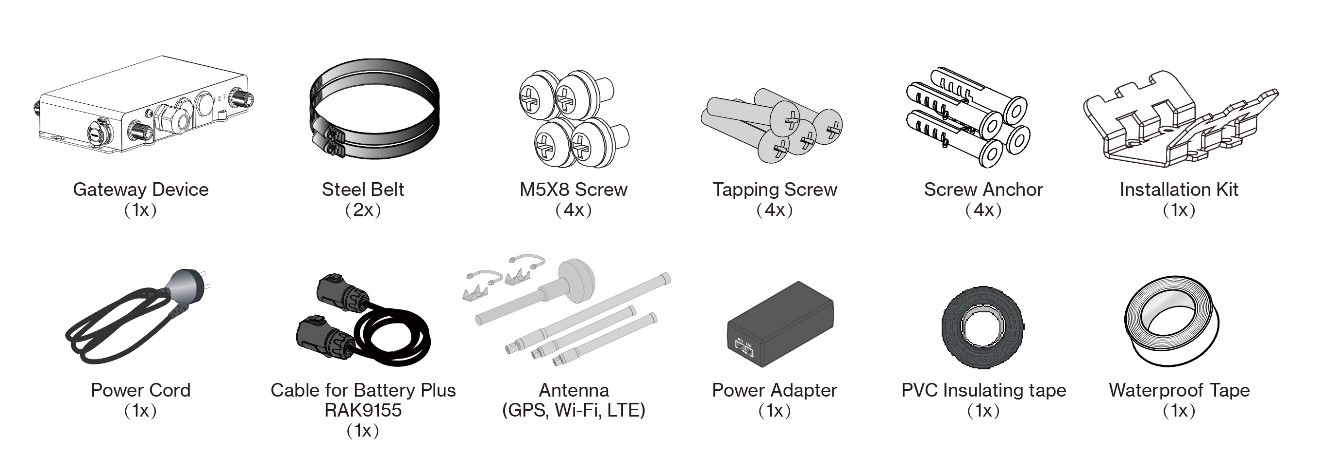 Figure 1: RAK7240V2/RAK7240CV2 package list 1
Figure 1: RAK7240V2/RAK7240CV2 package list 1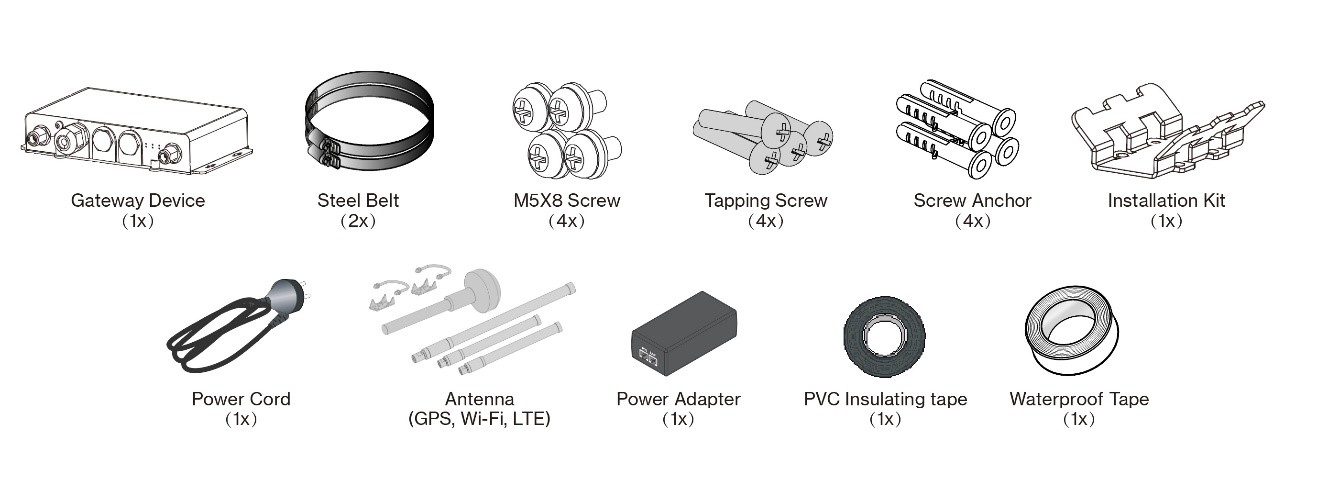 Figure 1: RAK7240V2/RAK7240CV2 package list 2
Figure 1: RAK7240V2/RAK7240CV2 package list 2- LoRa® antenna is not included and must be purchased separately.
- LTE antennas are included only with 8-channel cellular models (RAK7240CV2).
Installation
Insert SIM Card (For cellular models only: RAK7240CV2)
The SIM card slot of the cellular versions is not hot-swappable. Make sure the gateway is switched off before inserting or ejecting the SIM card.
- Start by unscrewing the cap of the NanoSIM interface on the gateway enclosure to expose the SIM card slot.
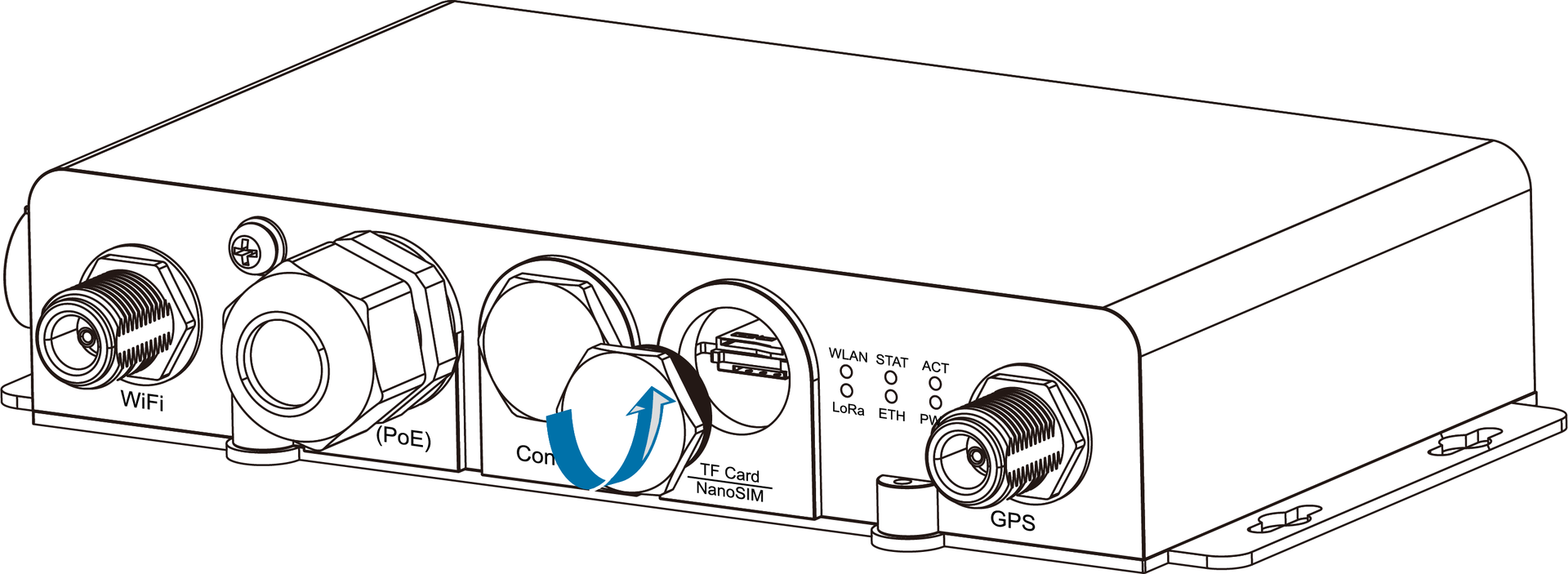 Figure 1: Unscrewing the cap of the NanoSIM interface
Figure 1: Unscrewing the cap of the NanoSIM interface- Push the SIM card into the card slot according to the placement method marked on the interface.
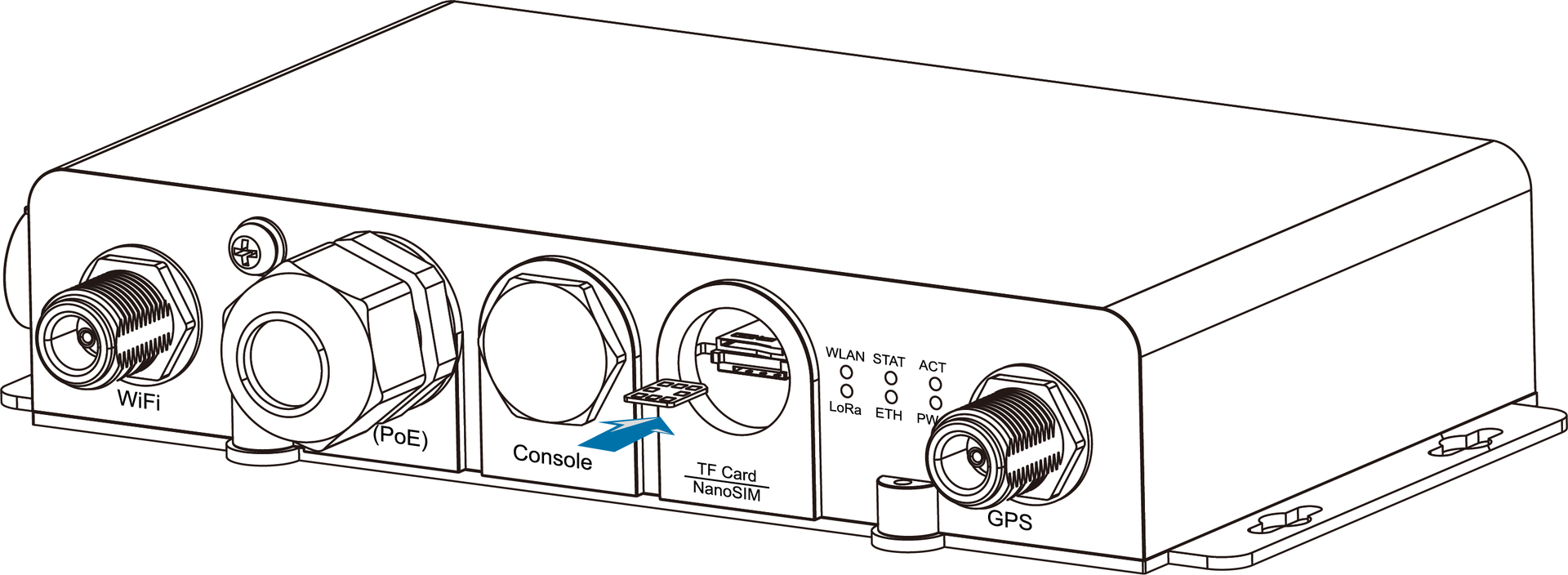 Figure 1: Inserting the SIM card
Figure 1: Inserting the SIM card- Once completed, screw back the metal cap. Make sure it is tightly screwed.
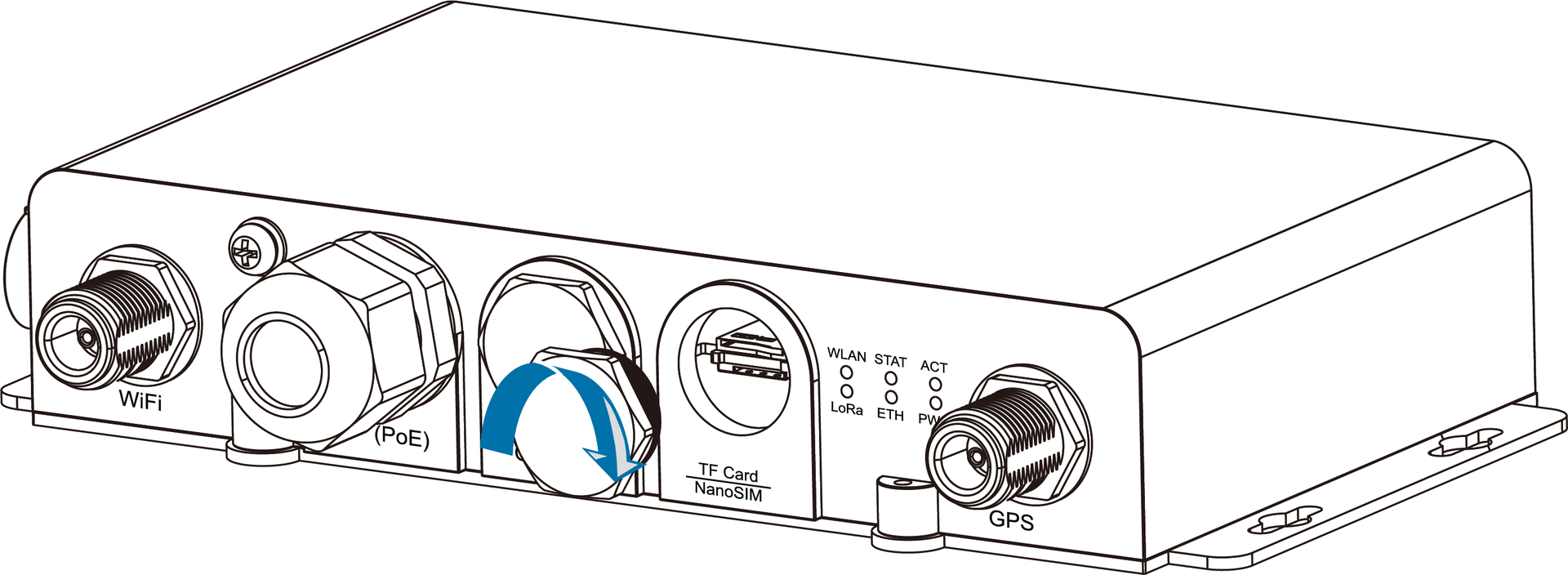 Figure 1: Screwing back the metal cap
Figure 1: Screwing back the metal capMount the Gateway
- Fix the installation kit at the bottom of the device with four M5 x 8 mm screws.
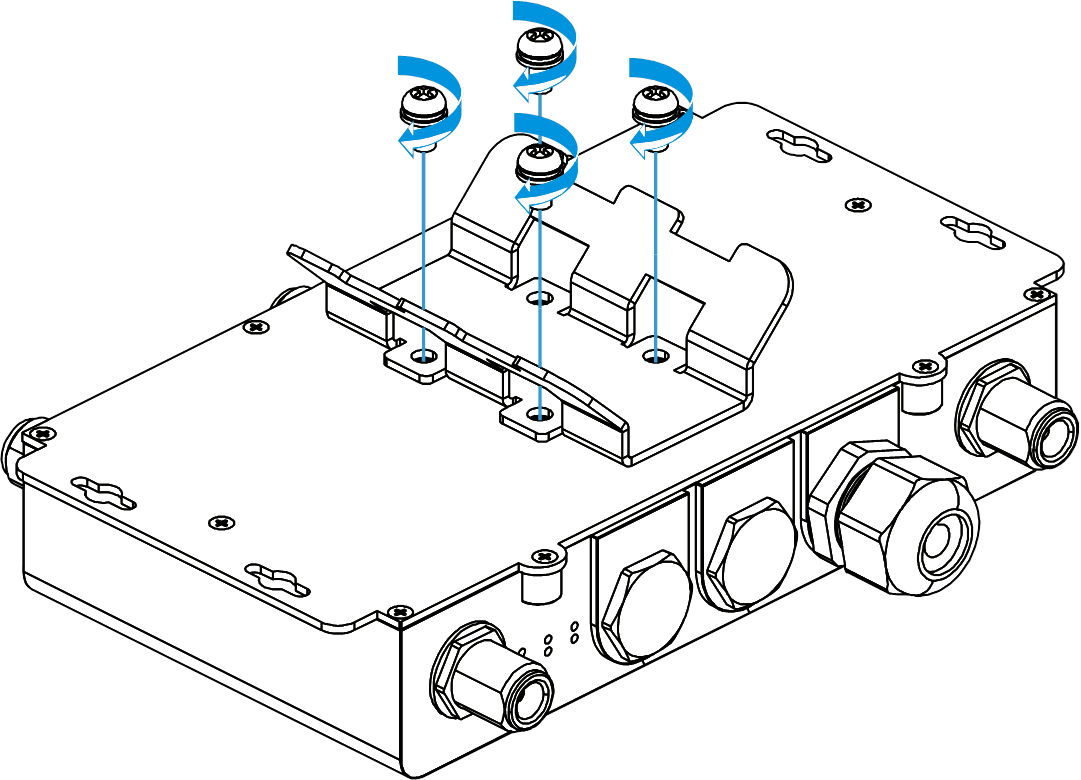 Figure 1: Fixing the installation kit to the RAK7240V2/RAK7240CV2
Figure 1: Fixing the installation kit to the RAK7240V2/RAK7240CV2- Slide the steel band clamps through the rectangular hole of the installation kit. Wrap the band clamps around the pole, lock them, and then tighten the clamps using a screwdriver.
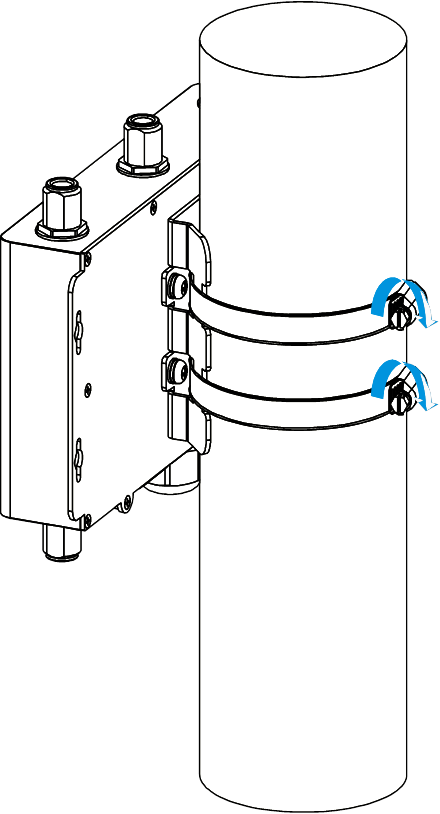 Figure 1: Fixing the RAK7240V2/RAK7240CV2 to a Pole
Figure 1: Fixing the RAK7240V2/RAK7240CV2 to a PoleInstall Antennas and Cables
- Attach the LoRa®, Wi-Fi, and GPS antennas. If you're using a cellular model, connect the LTE antennas as well.
- (Optional) If you plan to use PoE for power or Ethernet for network connectivity, you may now connect an Ethernet cable to the gateway's ETH (PoE) port.
Lightning Protection (Recommended)
Lightning strikes can generate powerful electrical surges that may harm sensitive electronic devices. It is essential to take appropriate precautions to minimize the risk of damage. The warranty provided does not cover damages resulting from lightning strikes or other acts of nature.
To ensure optimal performance and protect your equipment from potential damage, it is strongly recommended to install proper grounding and lightning protection for:
- All antenna connectors (LoRa®, GPS, Wi-Fi, LTE)
- The ETH(PoE) port
- The gateway enclosure
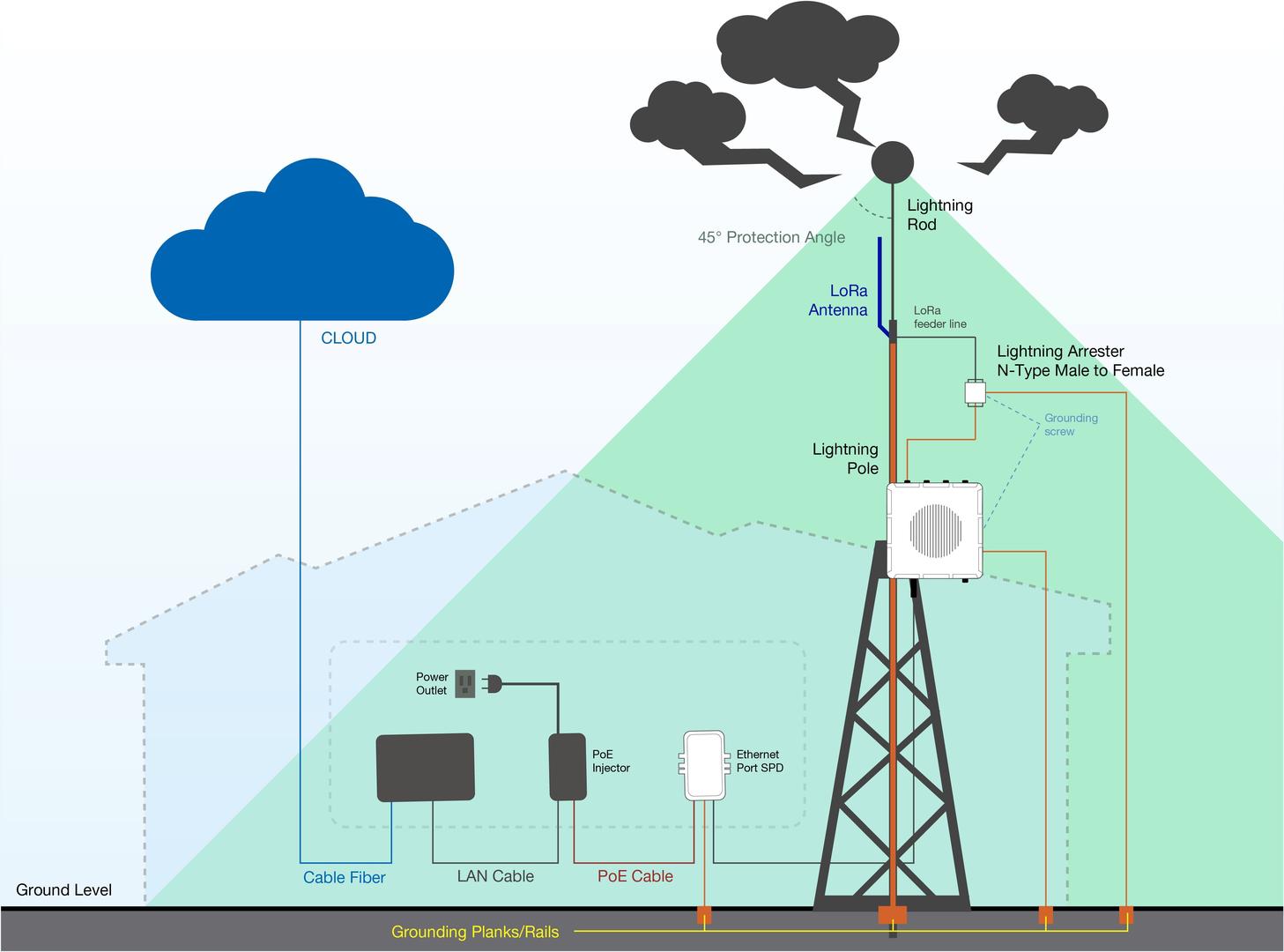 Figure 1: Full lightning protection set-up
Figure 1: Full lightning protection set-upOutdoor Surge Protection System
- Antenna Grounding
Install a lightning arrestor on each antenna's N-type terminal (LoRa®, LTE, Wi-Fi, GPS). The arrestors must be N-type Female to Male to match the antenna and enclosure connectors. Use 10 AWG or thicker grounding wire to connect the arrestor's screw terminal to the grounding rail mounted on the building wall or a grounding bar in field deployments. - Gateway Grounding
Connect the grounding screw located on the bottom side of the gateway to the same grounding rail or bar using a 10 AWG or thicker wire. This ensures proper discharge path for any electrical surges through the gateway chassis.
Indoor Surge Protection
To protect indoor devices connected to the gateway (e.g., PoE injectors, switches, routers), install an Ethernet SPD (Surge Protection Device) along the cable between the gateway and the PoE injector.
Recommended Equipment
- Lightning Arrestor for GPS Antenna: A surge protection device designed specifically for GPS antennas. It uses a high-pass filter to block low-frequency lightning-induced interference while maintaining minimal insertion loss for GPS signals. The device integrates a TVS diode and gas discharge tube (GDT) to protect the DC feed circuit from transients and over-voltage events.
- Lightning arrestor for the LoRa, LTE and Wi-Fi antennas: This is a surge protection device for securing transceivers against over-voltage and surge current induced by lightning bolts. RAKwireless recommends installing lightning arrestors on all N-type antenna terminals, including LTE and 2.4G Wi-Fi antennas.
- Signal Surge Protective Device: Designed for CAT6 or Class E network cables, this SPD protects Ethernet-connected equipment from voltage surges induced by lightning or internal switching transients. It is widely used in industrial and office communication systems, including Gigabit Ethernet, ATM, ISDN, and VoIP.
Weather Protection
To better protect the Ethernet cable gland and the antenna connector from the weather, cover them with PVC tape.
- Clean the surface area of the connector that will be wrapped. Wrap a layer of PVC tape with a 50% overlap according to the rotation direction of the connector. Continue wrapping the PVC tape to about 10 mm below the end of the connector.
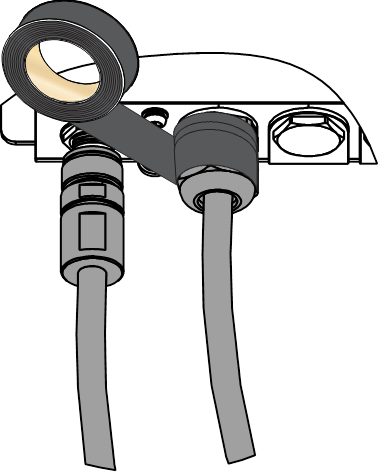 Figure 1: Wrapping with PVC tape
Figure 1: Wrapping with PVC tape- Cut off about 50 cm waterproof tape. Stretch it to double its length and wrap three layers around the connector with a 50% overlap. Hold the tape in place with your hand for a few seconds.
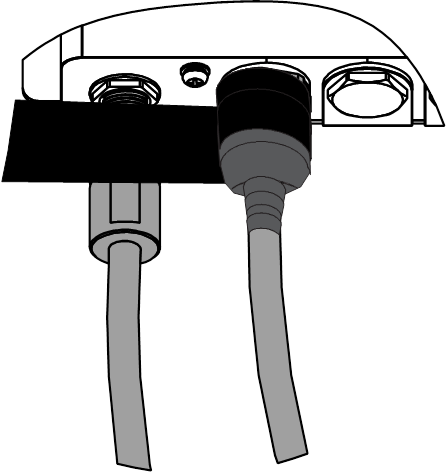 Figure 1: Wrapping with waterproof tape
Figure 1: Wrapping with waterproof tape- Wrap three additional layers with PVC tape with natural uncoiling force and a 50% overlap. Ensure to cover the head and the tail of the connector.
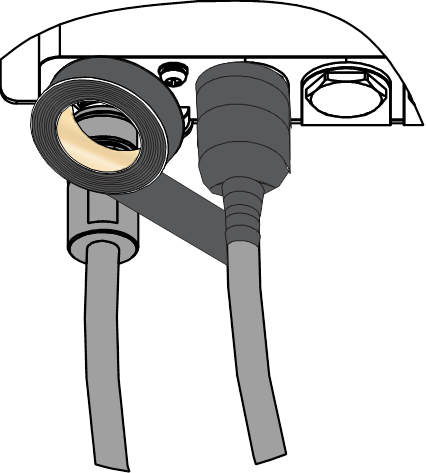 Figure 1: Final PVC wrapping
Figure 1: Final PVC wrappingPower On the Gateway
Do not power the device if any antenna port has been left open. In case you do not desire to use one or more antenna features, make sure to terminate the port with a 50 Ω load.
Your gateway supports multiple power input options depending on the model variant:
PoE (Power over Ethernet)
- Connect the Ethernet cable from the gateway's ETH (PoE) port into the PoE output port of the injector.
- Plug the injector into a power outlet to power up the gateway.
 Figure 1: Powering the gateway using PoE
Figure 1: Powering the gateway using PoE
DC Power Input (9~24 VDC)
The gateway includes a pre-terminated DC power cable, designed for direct connection with RAK Battery Plus.
To use RAK Battery Plus, simply connect the included DC power cable between the battery and the gateway's DC input port.
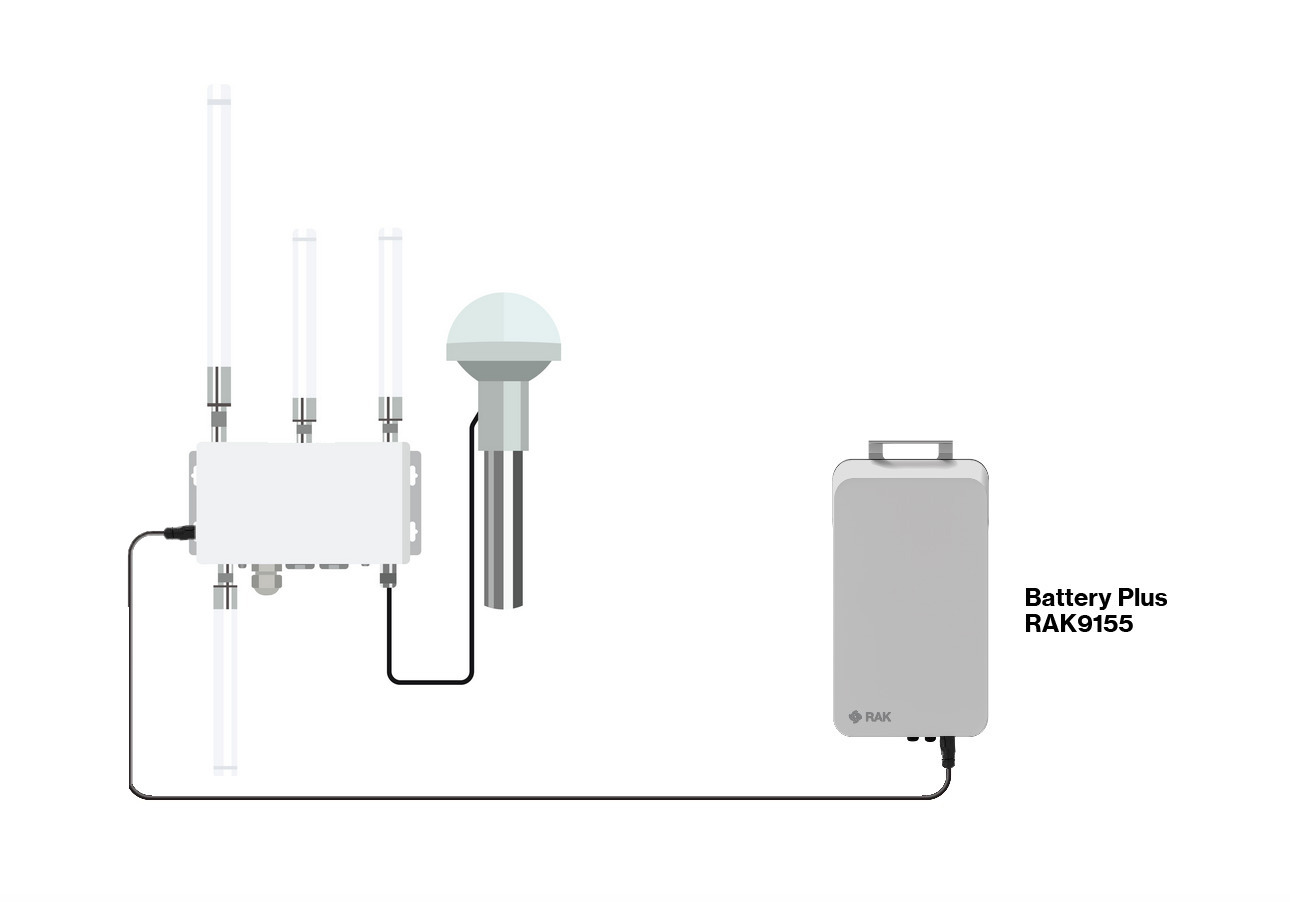 Figure 1: Powering the gateway using RAK Battery Plus
Figure 1: Powering the gateway using RAK Battery PlusRAK9155 Battery Plus is not included in the bundle, it needs to be purchased separately.
If you're using your own 9~24 VDC power supply, you may trim the open end of the cable and connect the wires to your power source.
Polarity:
- Red wire = Positive (+)
- Black wire = Negative (–)
Use caution when trimming and wiring. Incorrect polarity may damage the gateway and void the warranty.
Access the Gateway
In this section, two methods of accessing the gateway are provided to offer different alternatives based on the availability of the required resources.
Wi-Fi AP Mode
By default, the gateway will work in Wi-Fi AP Mode which means that you can find an SSID named like RAK7240V2_XXXX or RAK7240CV2_XXXX on your PC's Wi-Fi Network List. XXXX is the last two bytes of the Gateway MAC address.
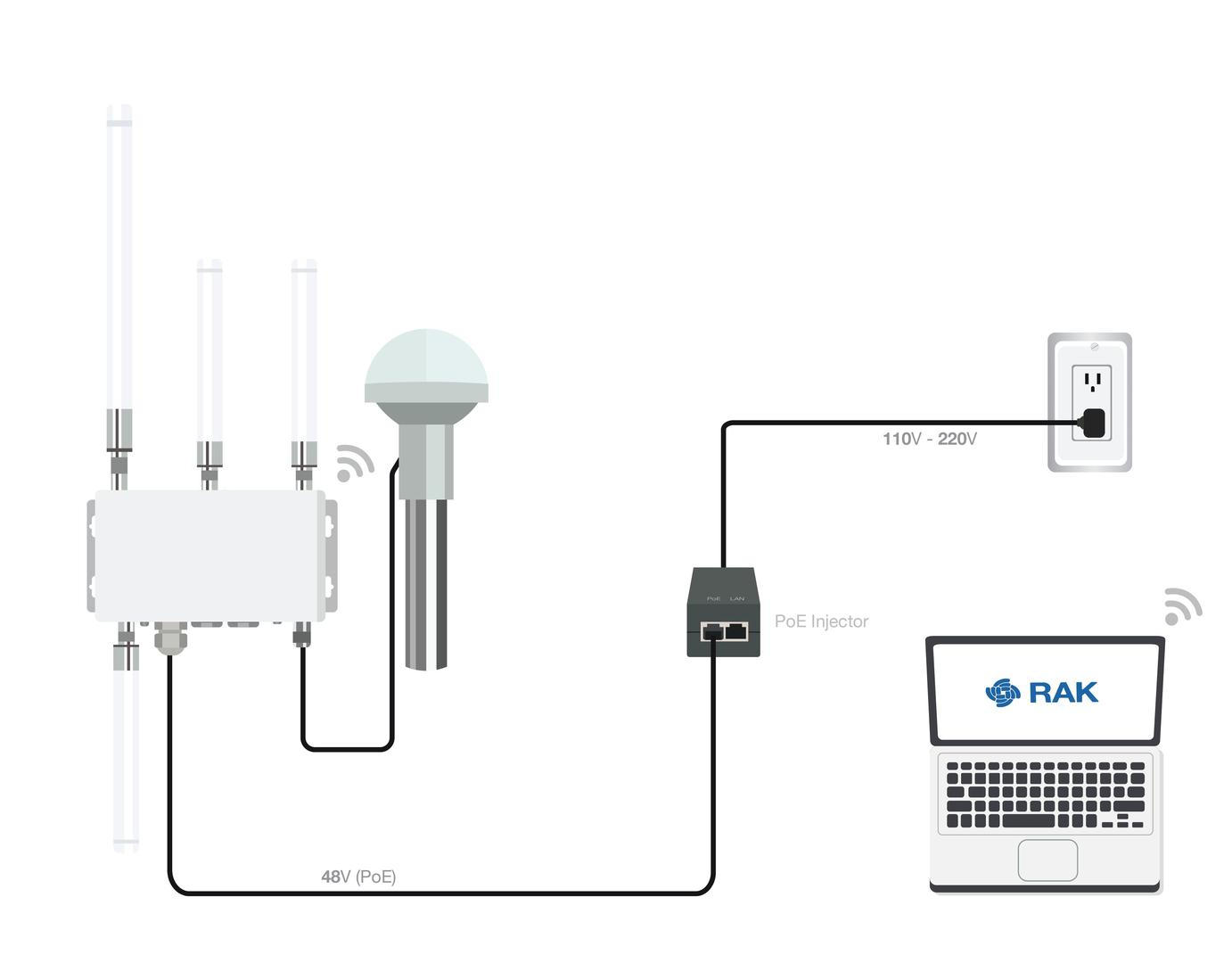 Figure 1: Accessing the gateway via Wi-Fi AP Mode
Figure 1: Accessing the gateway via Wi-Fi AP Mode- Connect to the gateway's Wi-Fi.
NOTE
No password is required to connect via Wi-Fi.
- Open a web browser and enter the IP address:
192.168.230.1. - On the first login, you must set a login password. The password must:
- At least 12 characters long
- Has at least one special character (
!“#$%&\‘()*+,-./:;<=>?@[]^_{|}~) - Has at least one number
- Has at least one standard Latin letter (used in the English alphabet)
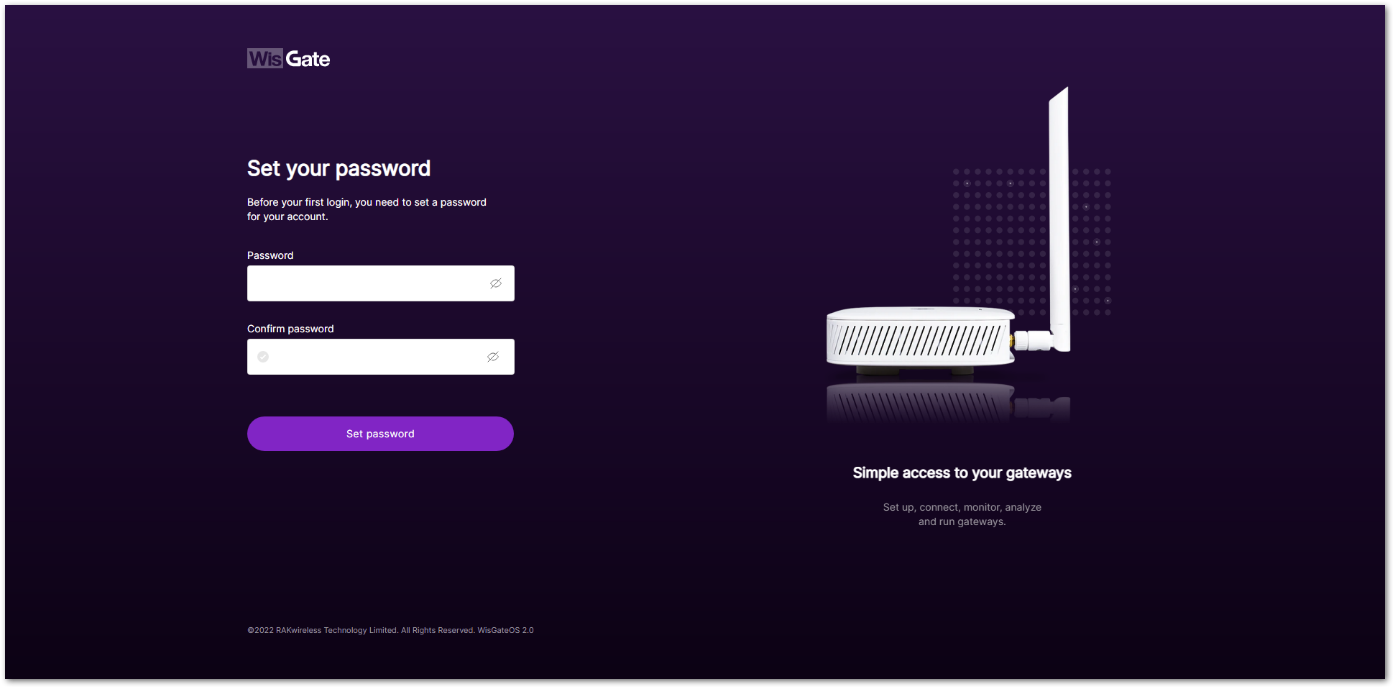 Figure 1: Web UI login page
Figure 1: Web UI login page- Click Set password to continue. You will be redirected to the LoRaWAN Statistics page.
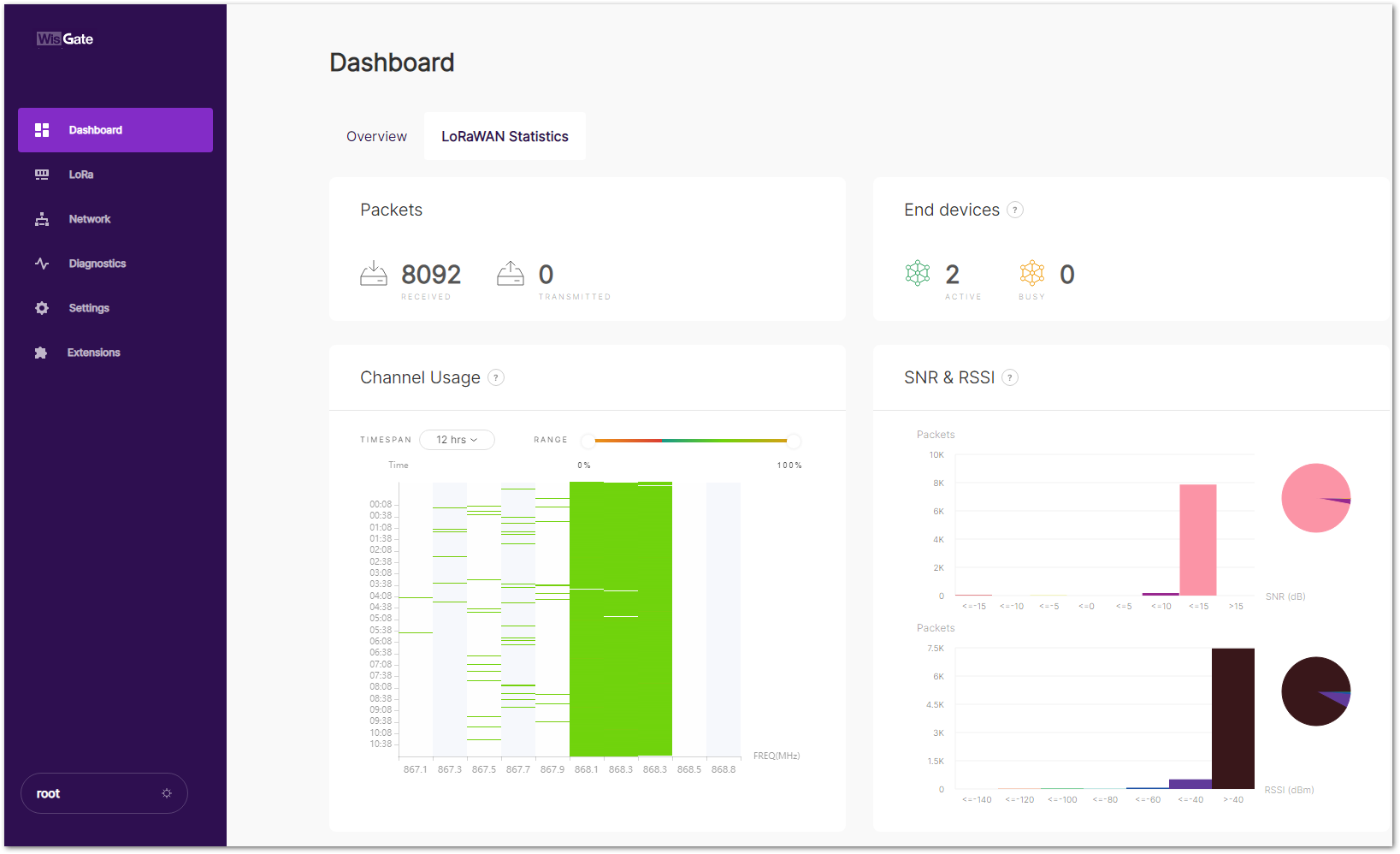 Figure 1: LoRaWAN statistics page
Figure 1: LoRaWAN statistics page- For future logins, use the password you set. The default login username is root.
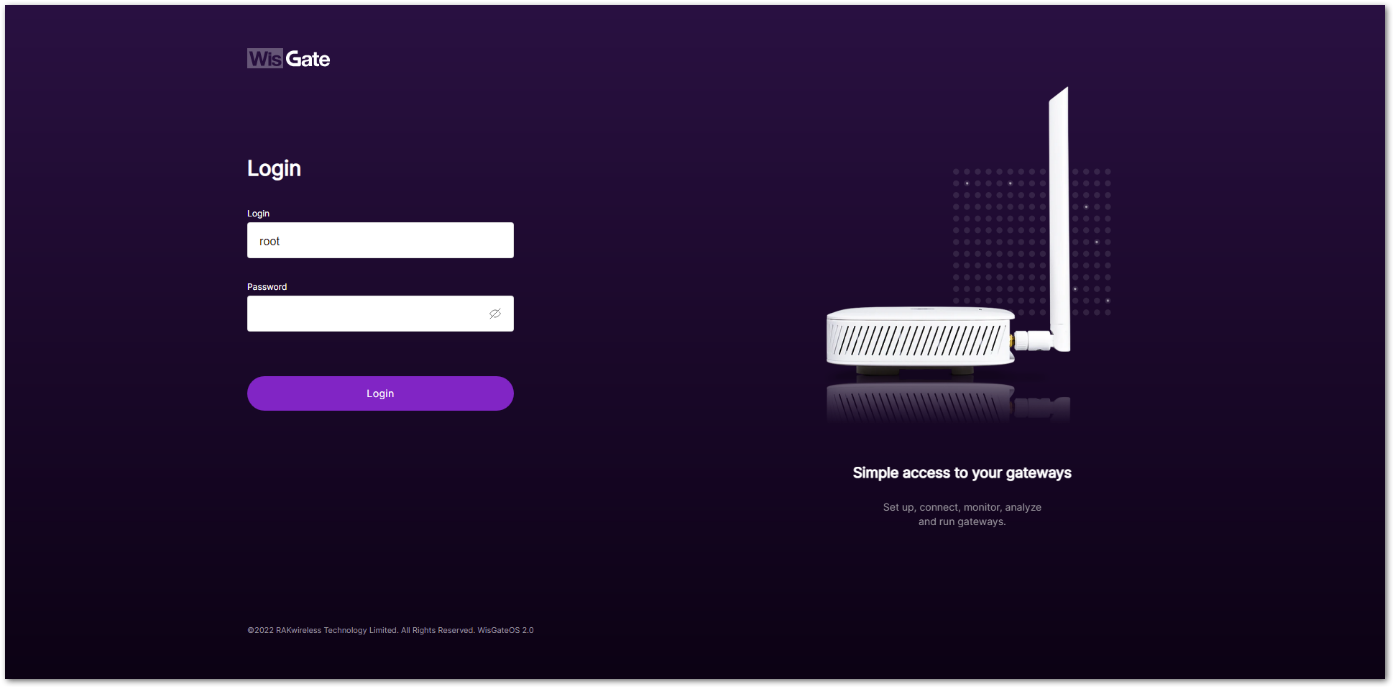 Figure 1: Login page with set password
Figure 1: Login page with set passwordWAN Port (Ethernet)
To access the gateway through the ETH (PoE) port, make sure you have completed the steps defined in the Install Antennas and Cables section.
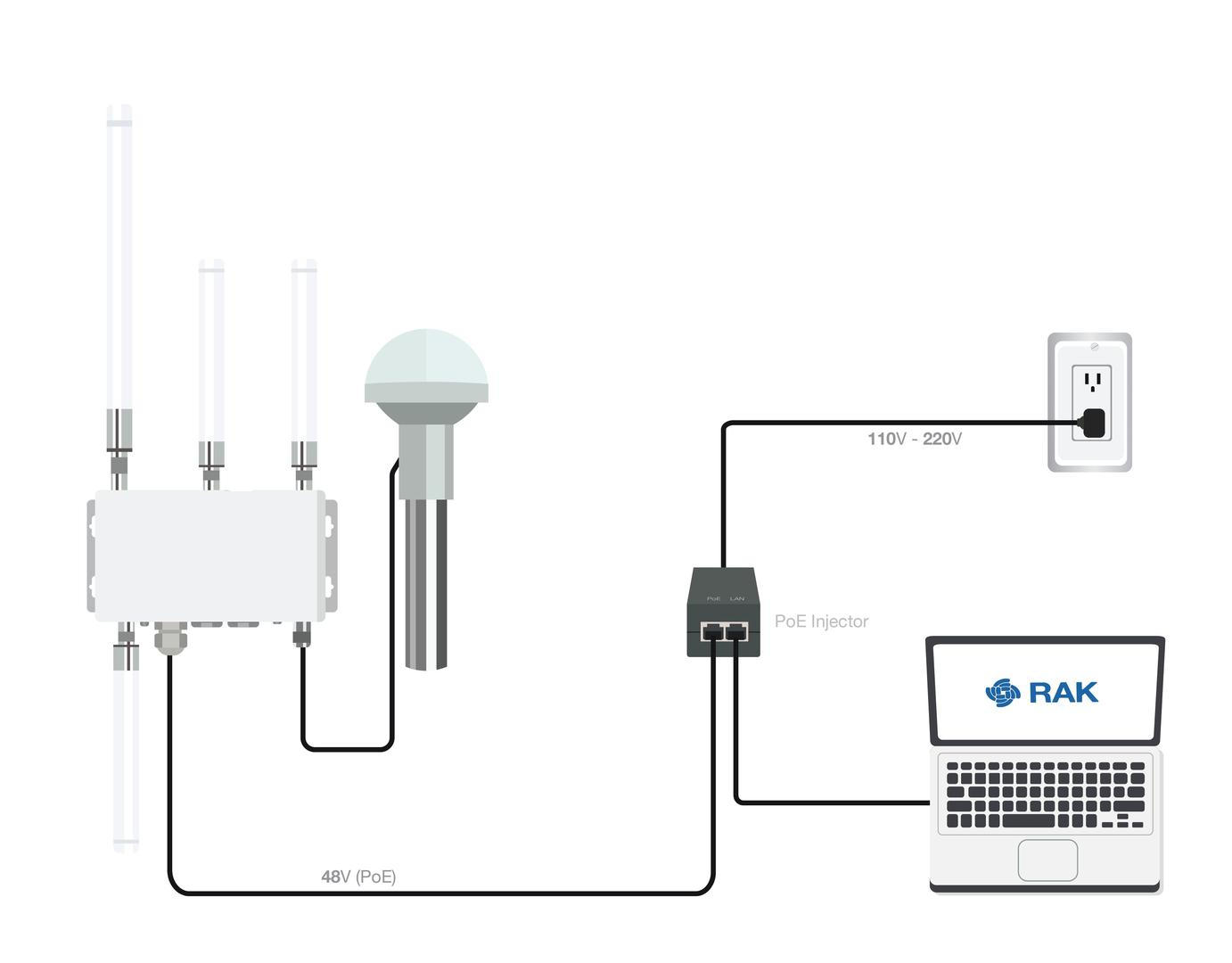 Figure 1: Accessing the gateway via WAN Port (Ethernet)
Figure 1: Accessing the gateway via WAN Port (Ethernet)- Connect one end of another Ethernet cable to the LAN port on the PoE adapter, and the other end to your PC.
- Set a static IP address on your PC in the same subnet as the gateway:
NOTE
The default IP is 169.254.X.X. The last two segments(X.X) are mapped from the last four bits of the MAC address of your gateway. For example, the last four bits of the MAC address are
0F:01, and the IP address is169.254.15.1. Make sure to manually set the address of your PC to one in the same network (for example,169.254.15.100). - Open the Internet Properties of your PC, and select Internet Protocol Version 4 (TCP/IPv4).
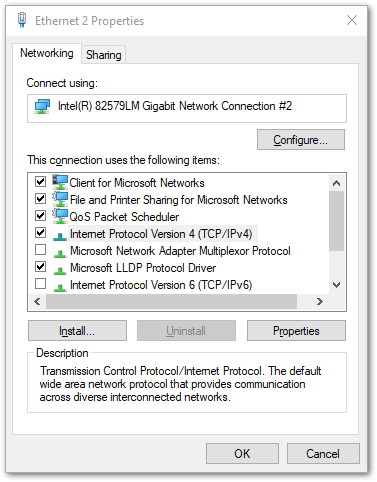 Figure 1: Internet properties
Figure 1: Internet properties- Select Use the following IP address, and set the PC's IP address (e.g.,
169.254.15.100). Ensure the PC's IP address is in the same subnet as the gateway (e.g., if the gateway IP is169.254.15.1, set the PC to169.254.15.100).
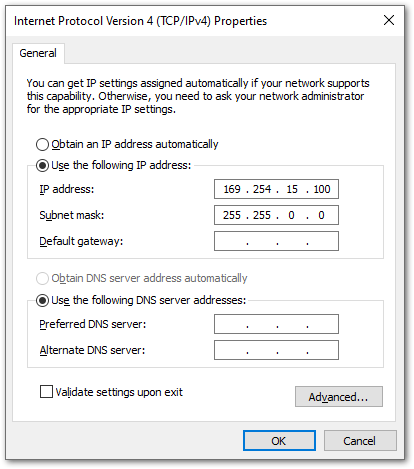 Figure 1: Setting IP address of the PC
Figure 1: Setting IP address of the PCIn this example, you can access the gateway on the 169.254.15.1 address.
- In a web browser, enter the gateway's IP (e.g.,
169.254.15.1) to access the Web UI. - Set the login password following the same rules as in Wi-Fi mode.
- After setting the password, the LoRaWAN Statistics page will load.
- Use the username
rootand your password for future logins.
Access the Internet
You can connect the gateway to the internet through Wi-Fi, Ethernet, or LTE (for LTE models).
Connect Through Wi-Fi
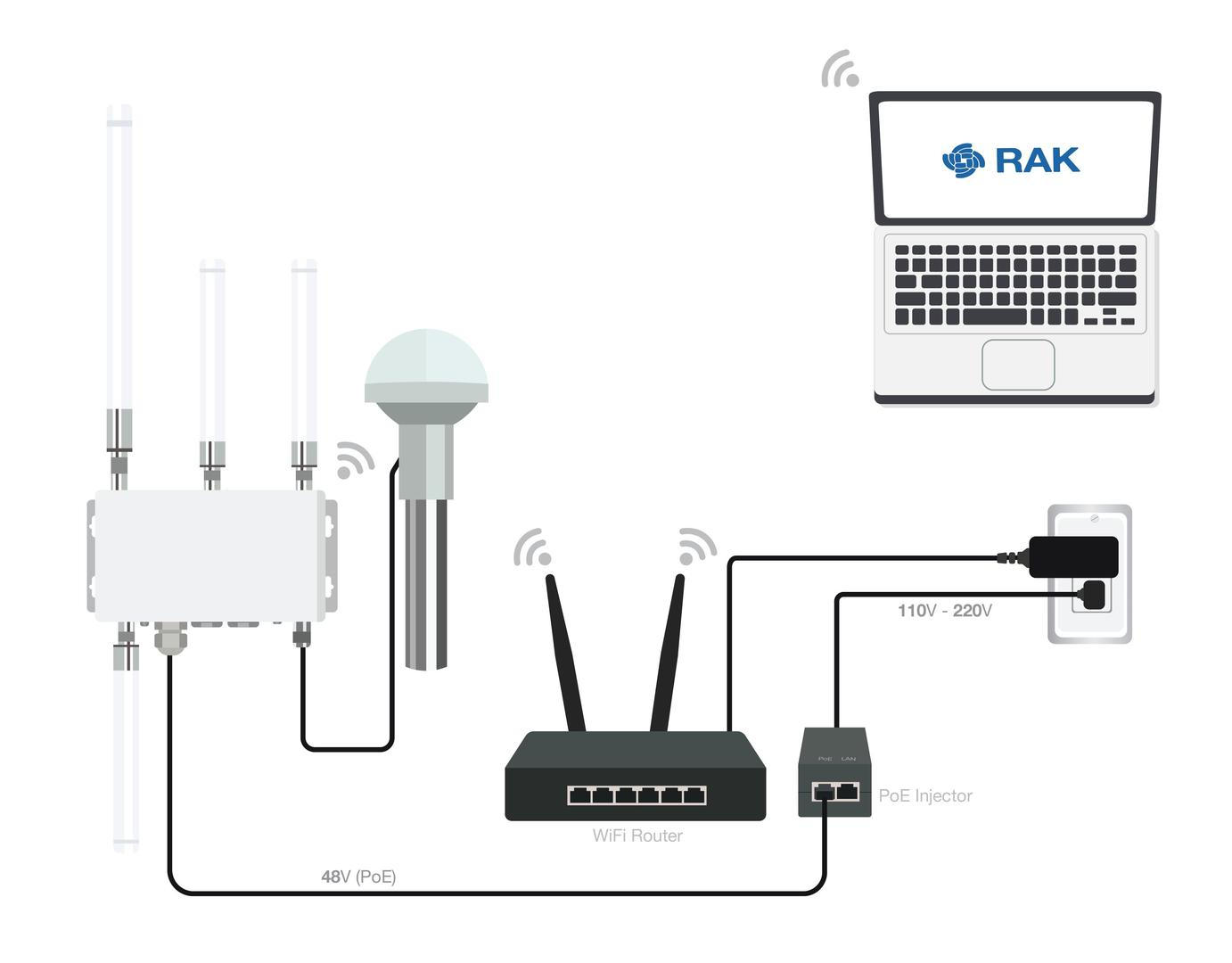 Figure 1: Accessing the Internet via Wi-Fi
Figure 1: Accessing the Internet via Wi-Fi- Log in to the Web UI, go to Network > WAN > Wi-Fi.
- Expand the Wi-Fi section and click on Settings. Ensure the Interface is enabled.
- Click the Scan button to select your ESSID, or manually enter the ESSID of the network by clicking Enter network (E)SSID manually.
- Choose the correct Encryption method and enter the appropriate Key.
For details, refer to the WisGateOS 2 User Manual > WAN > Wi-Fi.NOTE
Assuming you have entered the correct parameter values, you should receive an IP address assigned by your Wi-Fi router's (AP) built-in DHCP server. You can use this new IP address to log in via a web browser (the same way as in AP mode).
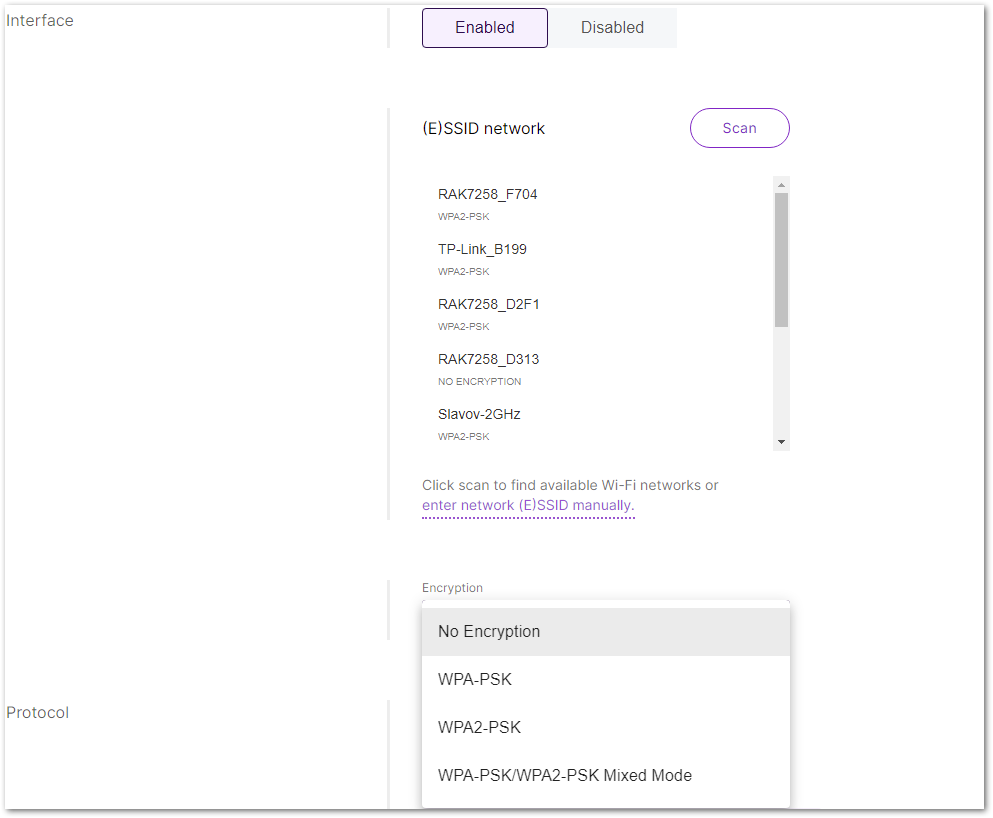 Figure 1: Wi-Fi settings
Figure 1: Wi-Fi settingsConnect Through Ethernet/PoE
To access the Internet through the ETH (PoE) port, make sure you have completed the steps defined in the Install Antennas and Cables section.
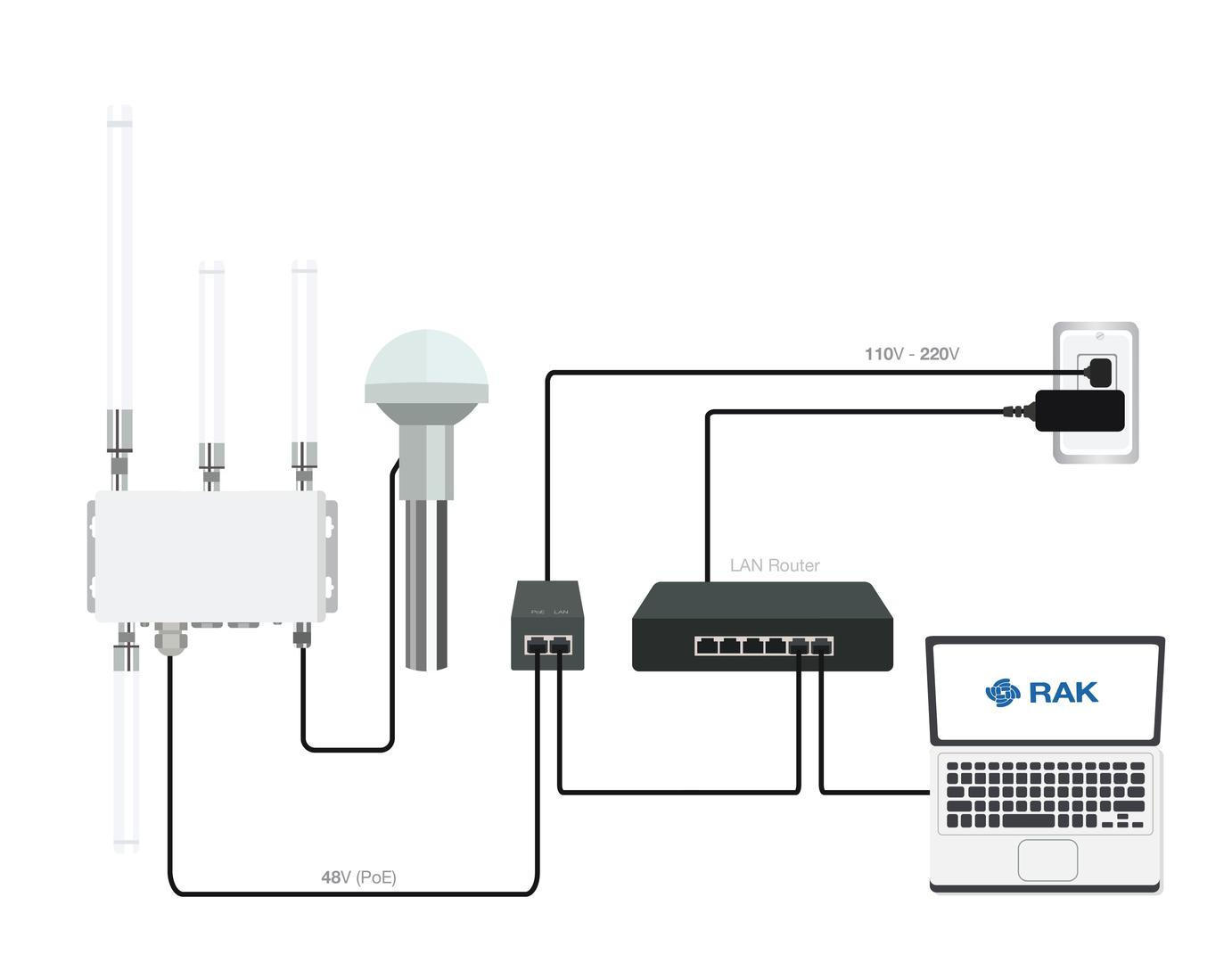 Figure 1: Accessing the Internet through Ethernet
Figure 1: Accessing the Internet through Ethernet- Connect the LAN port of the PoE injector to your route. The router's DHCP server should assign an IP address to the gateway.
The router's DHCP server will automatically assign an IP address to the gateway. You can use this assigned IP to access the gateway via a web browser.
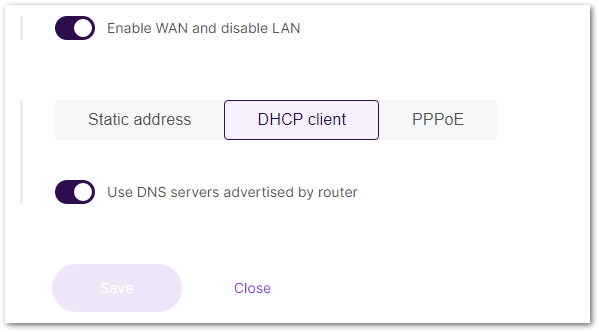 Figure 1: Default settings
Figure 1: Default settingsIf additional configuration is required, refer to the WisGateOS 2 User Manual > WAN > Ethernet.
Connect Through Cellular
If your gateway supports LTE and you have inserted the SIM card, the gateway will automatically connect to the cellular network once the SIM card is inserted.
- If manual APN configuration is needed, go to Network > WAN > Cellular in the Web UI.
- Expand the Cellular section and click on Settings.
 Figure 1: Cellular Interface Page
Figure 1: Cellular Interface Page
For parameter configuration, refer to the WisGateOS 2 User Manual > WAN > Cellular.
Tutorials
In this section, you can browse tutorials about the RAK7240V2/RAK7240CV2 gateway to help you better understand and use the product.
